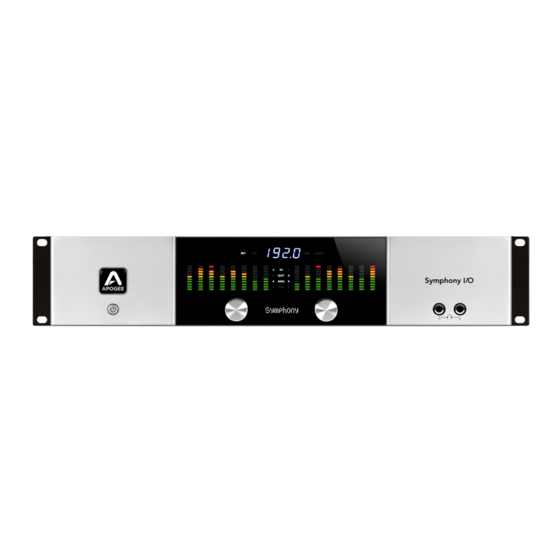
Apogee Symphony I/O Audio Interface Manuals
Manuals and User Guides for Apogee Symphony I/O Audio Interface. We have 3 Apogee Symphony I/O Audio Interface manuals available for free PDF download: User Manual, Instructions & Manuallines
Apogee Symphony I/O User Manual (130 pages)
Apogee Symphony I/O Users Guide
Brand: Apogee
|
Category: Recording Equipment
|
Size: 9 MB
Table of Contents
Advertisement
Apogee Symphony I/O User Manual (99 pages)
Brand: Apogee
|
Category: Recording Equipment
|
Size: 12 MB
Table of Contents
Apogee Symphony I/O Instructions & Manuallines (9 pages)
Brand: Apogee
|
Category: Accessories
|
Size: 0 MB
Advertisement
Advertisement


